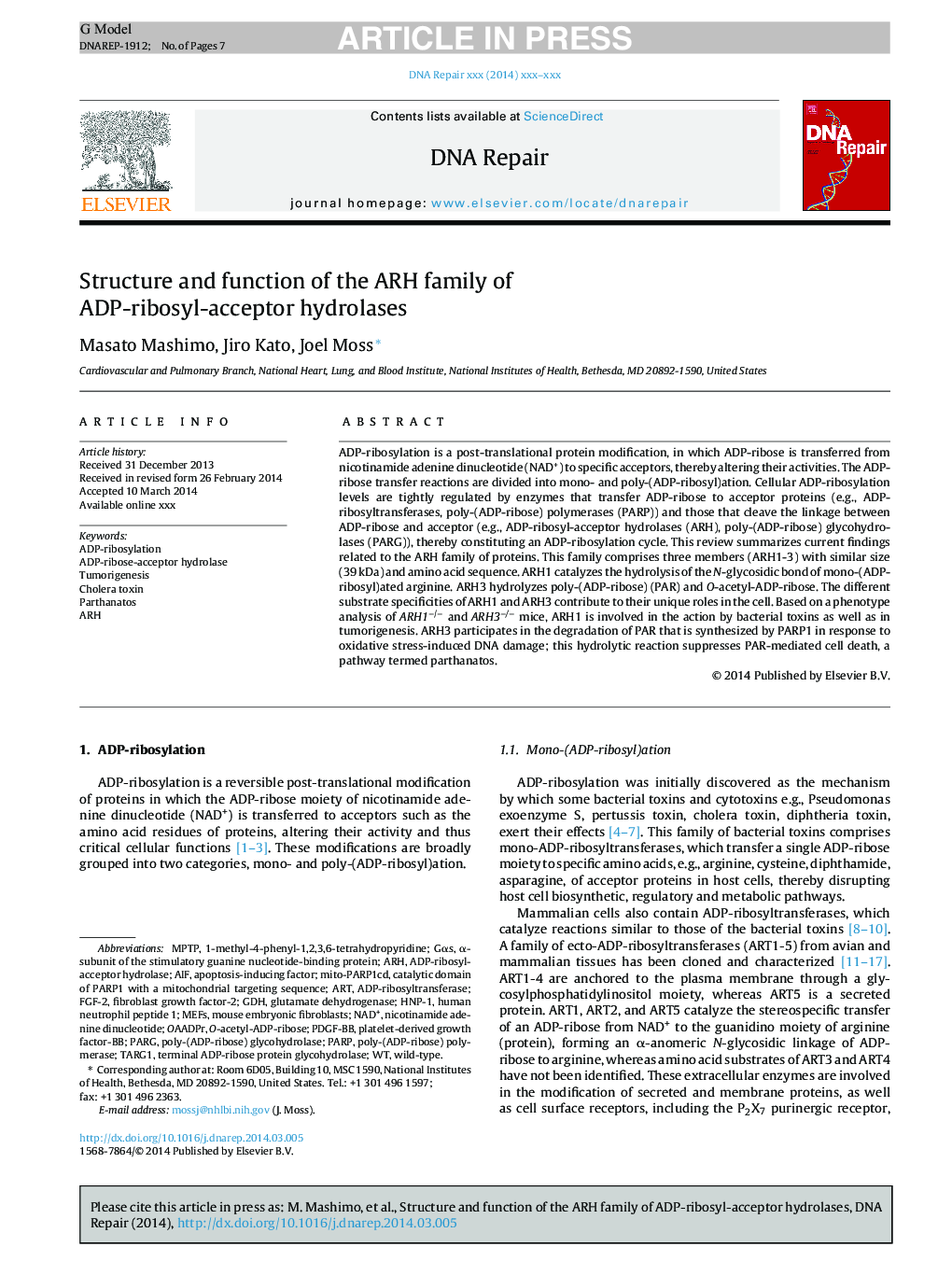| Article ID | Journal | Published Year | Pages | File Type |
|---|---|---|---|---|
| 8320750 | DNA Repair | 2014 | 7 Pages |
Abstract
ADP-ribosylation is a post-translational protein modification, in which ADP-ribose is transferred from nicotinamide adenine dinucleotide (NAD+) to specific acceptors, thereby altering their activities. The ADP-ribose transfer reactions are divided into mono- and poly-(ADP-ribosyl)ation. Cellular ADP-ribosylation levels are tightly regulated by enzymes that transfer ADP-ribose to acceptor proteins (e.g., ADP-ribosyltransferases, poly-(ADP-ribose) polymerases (PARP)) and those that cleave the linkage between ADP-ribose and acceptor (e.g., ADP-ribosyl-acceptor hydrolases (ARH), poly-(ADP-ribose) glycohydrolases (PARG)), thereby constituting an ADP-ribosylation cycle. This review summarizes current findings related to the ARH family of proteins. This family comprises three members (ARH1-3) with similar size (39Â kDa) and amino acid sequence. ARH1 catalyzes the hydrolysis of the N-glycosidic bond of mono-(ADP-ribosyl)ated arginine. ARH3 hydrolyzes poly-(ADP-ribose) (PAR) and O-acetyl-ADP-ribose. The different substrate specificities of ARH1 and ARH3 contribute to their unique roles in the cell. Based on a phenotype analysis of ARH1â/â and ARH3â/â mice, ARH1 is involved in the action by bacterial toxins as well as in tumorigenesis. ARH3 participates in the degradation of PAR that is synthesized by PARP1 in response to oxidative stress-induced DNA damage; this hydrolytic reaction suppresses PAR-mediated cell death, a pathway termed parthanatos.
Keywords
PARGPARPGαsARHFGF-2OAADPrMEFsMPTPADP-ribosylationGDHHNP-1O-acetyl-ADP-riboseADP-ribosyltransferasePDGF-BBParthanatos1-methyl-4-phenyl-1,2,3,6-tetrahydropyridineNAD+AIFTumorigenesischolera toxinapoptosis-inducing factorplatelet-derived growth factor-BBfibroblast growth factor-2mouse embryonic fibroblastswild-typenicotinamide adenine dinucleotideARTpoly-(ADP-ribose) polymeraseglutamate dehydrogenase
Related Topics
Life Sciences
Biochemistry, Genetics and Molecular Biology
Biochemistry
Authors
Masato Mashimo, Jiro Kato, Joel Moss,
